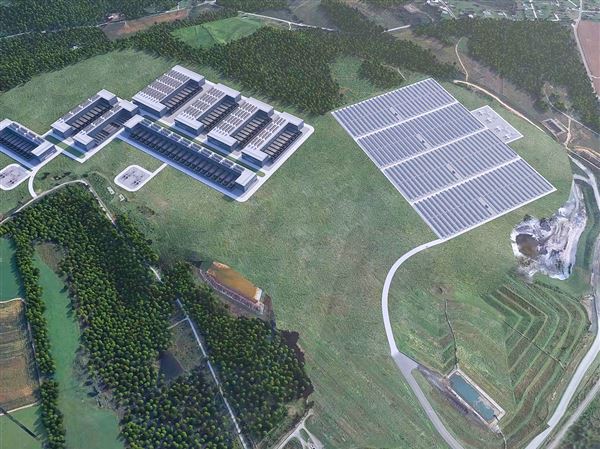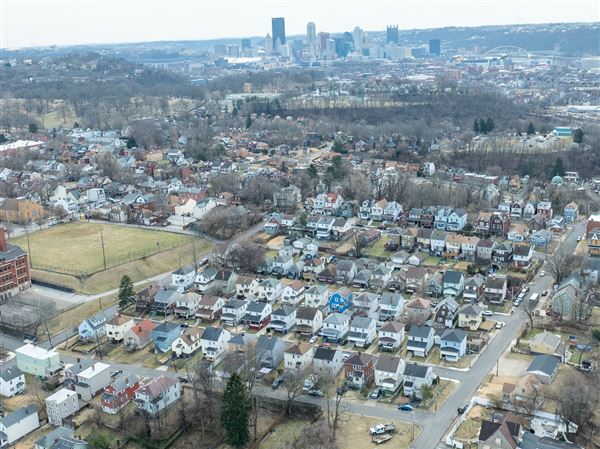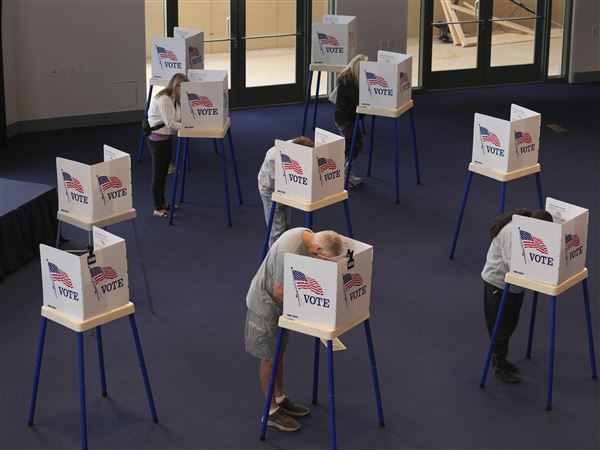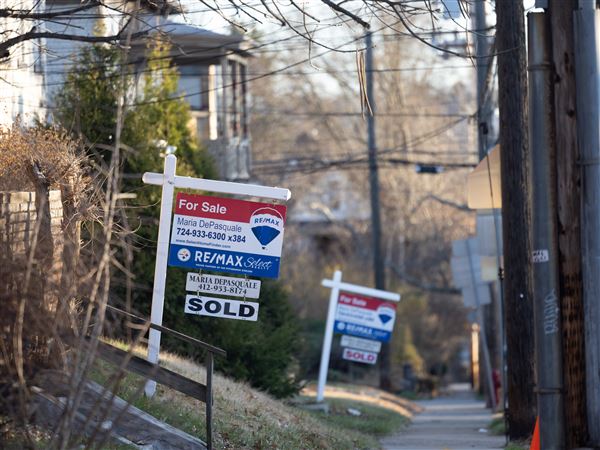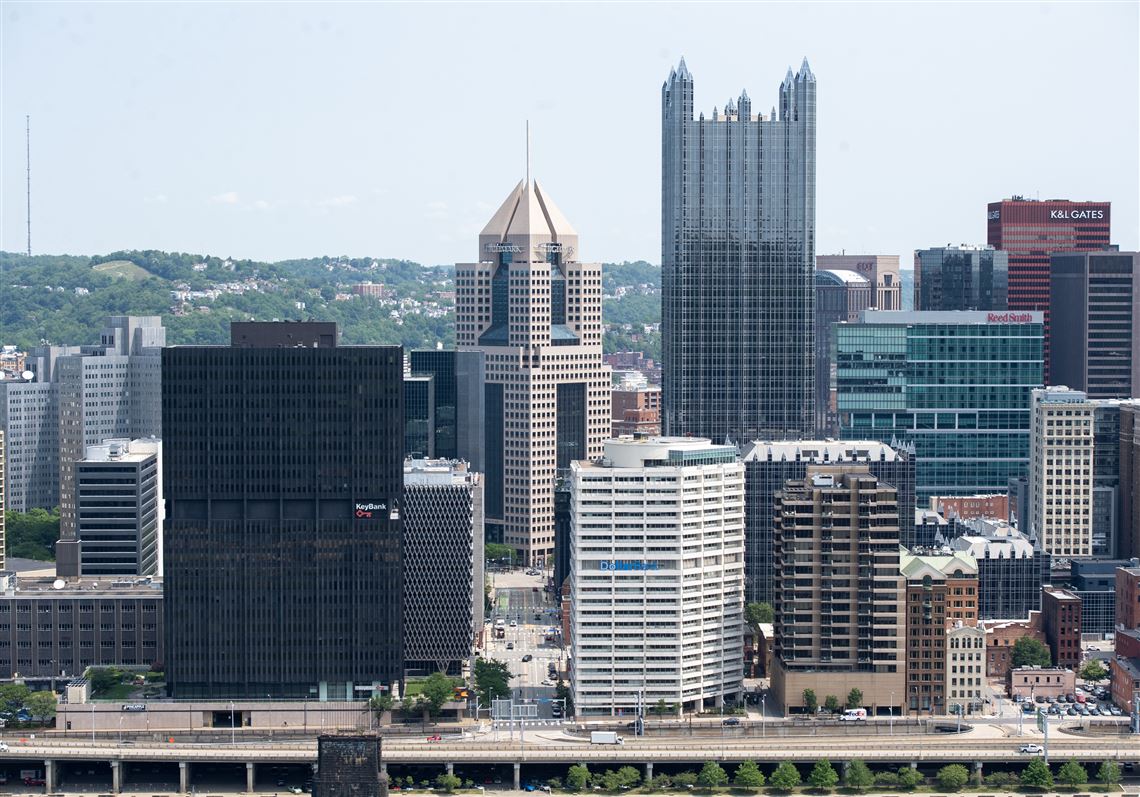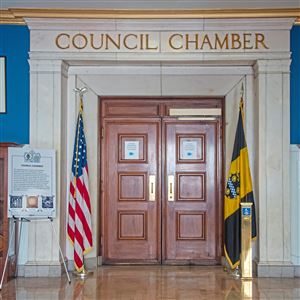Corporate, civic, and union leaders rallied behind a proposal Monday to offer broader tax relief for building conversions in a Downtown battered by soaring office vacancies and plummeting assessment values.
Pittsburgh Councilman Bobby Wilson outlined his plan to give building owners and developers broader city tax abatements for projects that create at least 50 full-time equivalent jobs or offer some affordable housing. The abatement would last for 10 years.
During a news conference at the Greer Cabaret Theater in Downtown, Mr. Wilson touted the proposal as the “best tool possible” to fix the growing crisis, with one real estate report claiming that nearly half of all office space could be empty by 2028 and two dozen buildings potentially could be in danger of foreclosure.
“We all recognize that the time has come to act because we are about to rescue Downtown, the economic heart of our city, from its current downward spiral,” he said.
Mr. Wilson’s plan, one of several circulating in a bid to address the deepening turmoil, would remove a $250,000 limit on the amount of tax relief currently available in the city as long as a project creates jobs or affordable housing.
Under the proposal, owners or developers would qualify to have half of their city real estate taxes abated for construction, improvements or conversions.
But to get a full abatement on the assessed value of a property after improvements, owners or developers must create at least 50 full-time jobs through the redevelopment.
As an alternative, they can get the same relief in an office to residential conversion if 10% of the units are set aside as affordable for households at 80% of the area median income, or $80,300 for a family of four in 2023.
All abatements would be applied against the increased value of a property, not the prevailing assessment, so the city would not be losing any current tax revenue.
The proposal is aimed largely at redevelopments designed to convert older failing office buildings into apartments or condominiums, although it would apply to other work as well.
According to Mr. Wilson’s office, at least nine Downtown office towers are “strong” candidates for conversion within the next six to 18 months. They could generate $550 million in direct investment, $275 million in indirect investment, and create more than 550 jobs. His office estimated that there are more than 7,500 residential units in the pipeline.
Without help, Downtown is “in serious financial trouble,” the councilman said. He noted that the office vacancy rate is currently close to 30% and could hit nearly 50% in four years.
Adding to the woes are property assessment reductions caused by vacancies, spawned in large part by the COVID-19 pandemic, and a steep reduction in the common level ratio, the number used in assessment appeal hearings to calculate the taxable value of real estate.
And both could have a big impact on tax revenue because Downtown represents nearly 25% of the city tax base. Mr. Wilson’s office estimated that the assessed value of Golden Triangle buildings could be cut in half over the next few years as a result of appeals. That could cost the city $17.5 million a year in tax revenue.
So far, the assessments on 10 buildings, including U.S. Steel Tower, PPG Place, and the Tower at PNC Plaza, have been slashed by $364.4 million for the 2023 tax year, with the potential to cost the city, the Pittsburgh Public Schools, and Allegheny County nearly $8.4 million in tax refunds.
The proposed legislation has created an unusual alliance, with Downtown developers and civic leaders backing it as well as the leaders of two of the region’s strongest unions.
One is the 32BJ branch of the Service Employees International Union. Sam Williamson, the branch’s Western Pennsylvania district leader, said Monday that the union’s backing “should tell you something about the depth of this crisis” facing Downtown.
A healthy Downtown is critical to saving thousands of good-paying union jobs involving hotel and municipal employees or those who clean and secure office buildings, he said.
“The truth is that when the sky is falling, it does give you the opportunity to pick up the pieces and put them together in a different, more creative, more empowering, more inspiring way,” said Mr. Williamson, a city Development Authority board member.
“That is the opportunity that we want to focus on. Not just on how bad things might appear at some moment in time, but the future that we can envision together and invest in together if we act creatively and decisively.”
The proposal also drew the support of the Allegheny-Fayette Central Labor Council. President Darrin Kelly said the plan not only helps to right Downtown but also has the potential to add “family-sustaining union jobs to re-create our region like the workers have done for generations.”
“Downtown is in trouble. We can’t run from that,” he said, adding the plan brings together government, business, and labor. “There are no sides when we’re dealing with something like this right now.”
One who did not attend Monday’s news conference was Mayor Ed Gainey. Mr. Wilson said he is “in close talks” with the Gainey administration and the URA about this proposal.
“We’re looking forward to bringing all partners in to make sure this happens,” he said.
Olga George, Mr. Gainey’s spokeswoman, declined comment, citing the ongoing strike by some Post-Gazette employees.
Mr. Wilson, who represents Downtown, planned to introduce his legislation on Monday. The proposal is broader than the city’s existing tax abatement program — one adopted by the county and city schools — which caps the relief at $250,000 per taxing body.
The existing program requires residential conversions to set aside 10% of all units for households at 60% of the area median income, or $60,240 for a family of four last year, or at least 60% of the units at 80% of the AMI.
Projects also qualify if they increase the number of full-time equivalent jobs by 50.
But many building owners and developers have balked at the current program, saying it doesn’t go far enough in providing incentive to redevelop or convert spaces, particularly given high interest rates and construction costs.
However, several have already thrown their support behind Mr. Wilson’s proposal. They include Lucas Piatt, CEO of Piatt Companies, which has been one of the major players in the redevelopment of Downtown over the past two decades.
Mr. Piatt, who attended Monday’s news conference, said afterwards that he is considering several new residential projects in central business district.
“Things like this will keep us investing in Downtown,” he said.
Rugby Realty, owner of the iconic Gulf Tower and number of other prominent buildings in Downtown, also has backed the new legislation. Rugby is working on a plan to convert Gulf Tower into 226 residential units — 27 affordable — and a 126-room luxury hotel.
It has estimated that even with the abatement, the project would generate $37 million in local tax revenue (wage, hotel, and real estate) over 10 years, while it would receive $7 million in benefits.
If Rugby can’t advance the project, it may have to mothball the building, President Aaron Stauber has said.
Beyond the tax abatement proposal, the Allegheny Conference on Community Development — in conjunction with the city, county, and URA — is exploring a plan for a Downtown Investment Zone funded by new local taxes or fees. The goal is to create a $200 million pot to help with building conversions and other improvements.
Stefani Pashman, Allegheny Conference CEO, also spoke in favor of Mr. Wilson’s tax abatement plan Monday.
Mark Belko: mbelko@post-gazette.com
First Published: March 11, 2024, 6:17 p.m.
Updated: March 12, 2024, 5:31 p.m.
